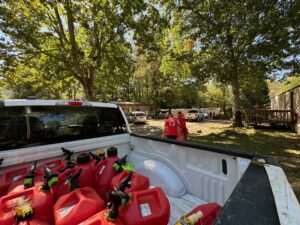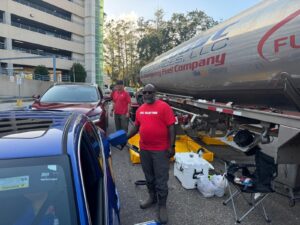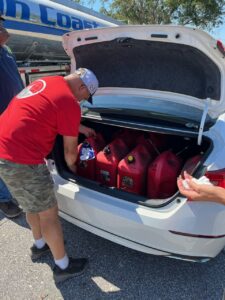March 15, 2025 | fuelrelieffund
When disaster strikes, every second counts—and at Fuel Relief Fund (FRF), we’re committed to responding quickly, safely, and effectively. But before we ever put boots on the ground, a lot of careful coordination happens behind the scenes to make sure we’re ready to deploy.
Unlike traditional aid organizations, we specialize in rapid response. We don’t wait for the perfect conditions—we move when we’re needed most. But that kind of speed requires preparation, trusted networks, and clear protocols.
-
Step 1: Monitoring the Situation
As soon as we learn of a disaster—whether it’s a hurricane, earthquake, or wildfire —we immediately begin assessing whether a response may be needed. This includes evaluating the potential scale of the event, anticipated fuel needs, and access to affected areas.
-
Step 2: Checking Volunteer Readiness
Next, we connect with our incredible volunteer base. These are experienced individuals—many with backgrounds in emergency response, military, or the fuel industry—who are trained to operate in high-pressure, high-impact environments. We reach out to determine availability and willingness: If we were to deploy, could they go and for how long?
-
Step 3: Conducting On-the-Ground Intel
Our volunteers don’t just wait for orders—they take initiative. Using their own networks, they connect with local fire departments, other NGOs, and partners in the region to understand the current conditions. Is it safe? Are roads accessible? Is there civil unrest or major infrastructure damage?
This real-time intel gathering is one of the most critical steps. It ensures that we’re not walking blindly into dangerous or logistically impossible situations—and helps us plan smart, safe, and impactful missions. At Fuel Relief Fund, the safety of our volunteers is our top priority—we would never send anyone into a situation that is not safe or secure.
While the volunteers are gathering intel, the team at Fuel Relief Fund are reaching out to our partners across the non-profit industry and fuel industry to see what intel are partners have and who has capacity to help us if we deploy to a certain disaster.
-
Step 4: Requesting Board Approval
Once we have volunteers ready to deploy and confirm that the destination is safe and accessible, we move quickly to our Board for final approval. Our Board’s deep understanding of both the humanitarian and logistical sides of our work, including the fuel industry, helps ensure we’re making responsible, strategic decisions with our limited resources.
-
Step 5: Ready for Liftoff!
With approval in hand, we move fast. Volunteers are briefed and deployed. Fuel sources are secured. Partnerships are activated. And we’re on the ground—often within hours—distributing fuel to power generators, emergency vehicles, hospitals, and homes.
Every deployment looks a little different, but the foundation is the same: fast, informed, coordinated action. At FRF, we believe fuel is a lifeline—essential for powering medical equipment, evacuating families, and keeping communities connected. Every moment spent preparing is an investment in the people who need us most, helping them navigate the transition from emergency to recovery and return to their daily lives.
Want to support rapid, life-saving fuel relief?
Your donation helps us stay ready to go whenever and wherever disaster strikes. Visit fuelrelieffund.org to learn more.







